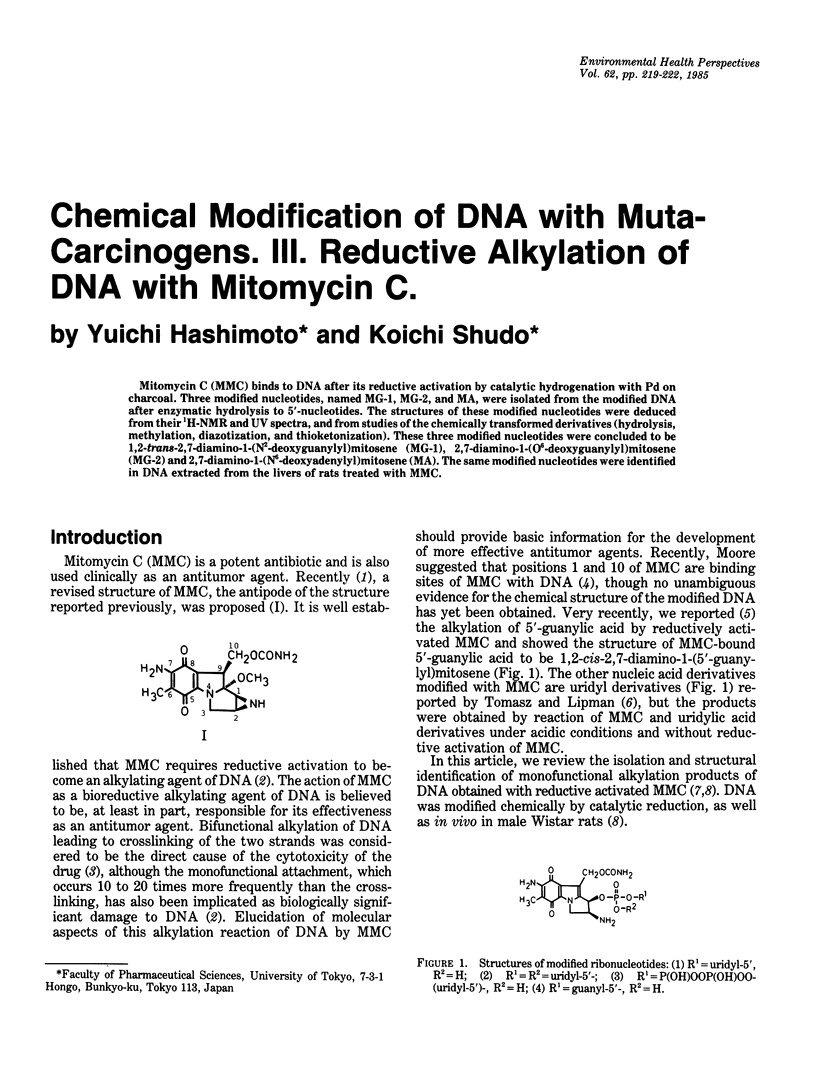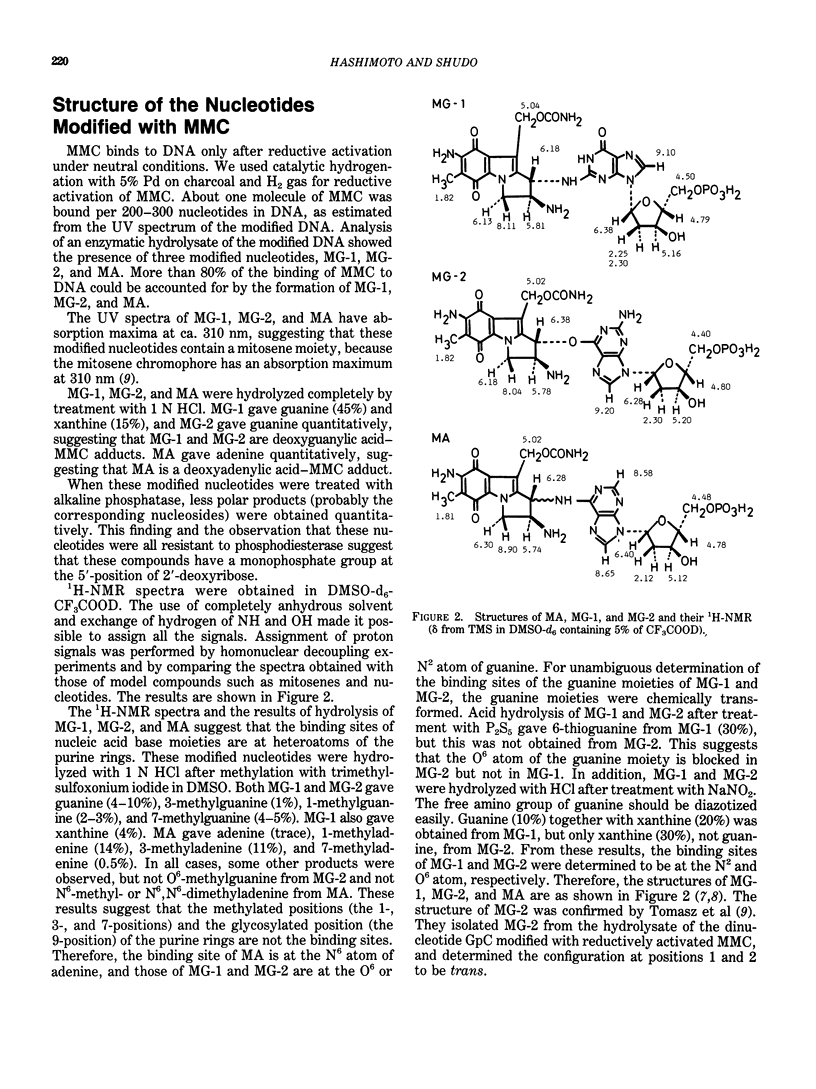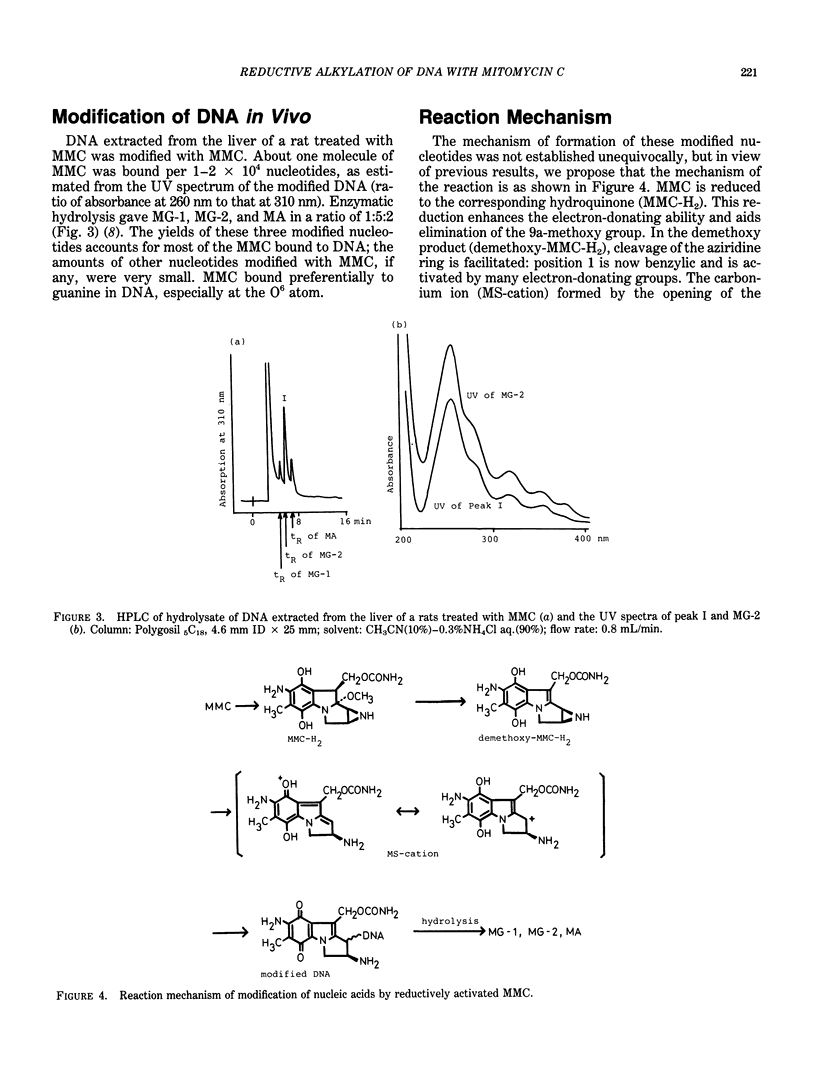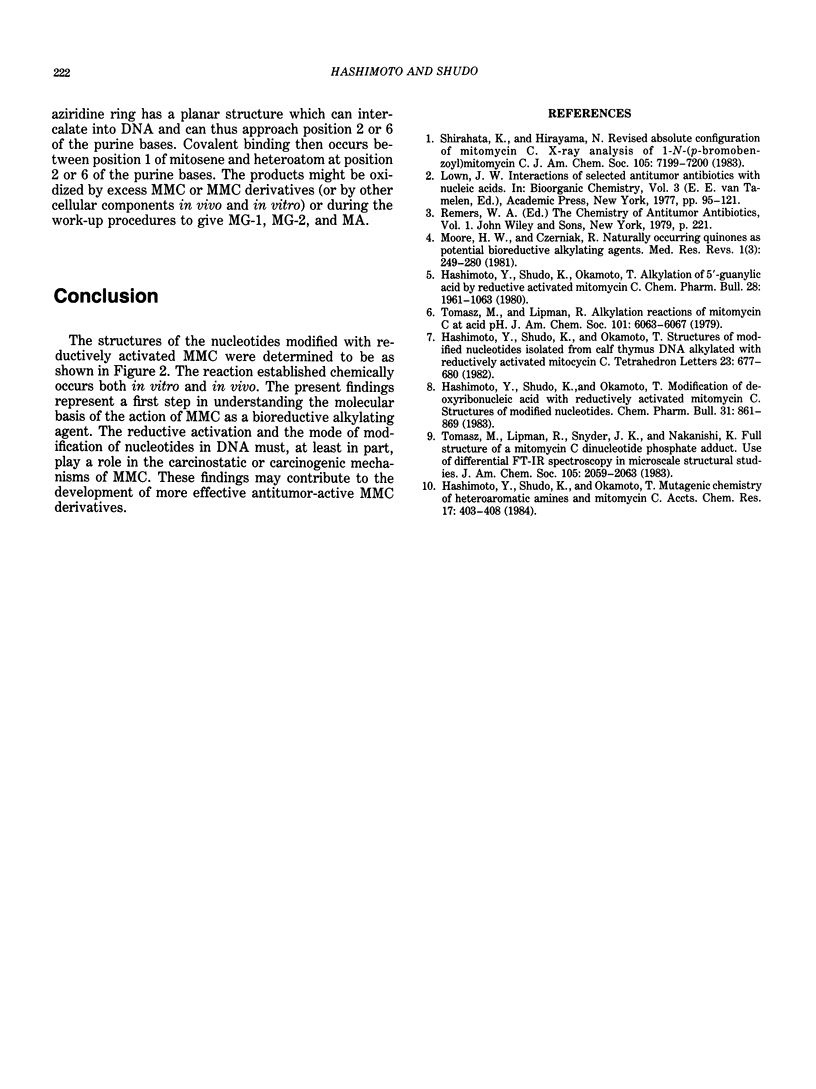Abstract
Mitomycin C (MMC) binds to DNA after its reductive activation by catalytic hydrogenation with Pd on charcoal. Three modified nucleotides, named MG-1, MG-2, and MA, were isolated from the modified DNA after enzymatic hydrolysis to 5'-nucleotides. The structures of these modified nucleotides were deduced from their 1H-NMR and UV spectra, and from studies of the chemically transformed derivatives (hydrolysis, methylation, diazotization, and thioketonization). These three modified nucleotides were concluded to be 1,2-trans-2,7-diamino-1-(N2-deoxyguanylyl)mitosene (MG-1), 2,7-diamino-1-(O6-deoxyguanylyl)mitosene (MG-2) and 2,7-diamino-1-(N6-deoxyadenylyl)mitosene (MA). The same modified nucleotides were identified in DNA extracted from the livers of rats treated with MMC.
Full text
PDF



Selected References
These references are in PubMed. This may not be the complete list of references from this article.
- Hashimoto Y., Shudo K., Okamoto T. Modification of deoxyribonucleic acid with reductively activated mitomycin C. Structures of modified nucleotides. Chem Pharm Bull (Tokyo) 1983 Mar;31(3):861–869. doi: 10.1248/cpb.31.861. [DOI] [PubMed] [Google Scholar]
- Moore H. W., Czerniak R. Naturally occurring quinones as potential bioreductive alkylating agents. Med Res Rev. 1981 Fall;1(3):249–280. doi: 10.1002/med.2610010303. [DOI] [PubMed] [Google Scholar]


